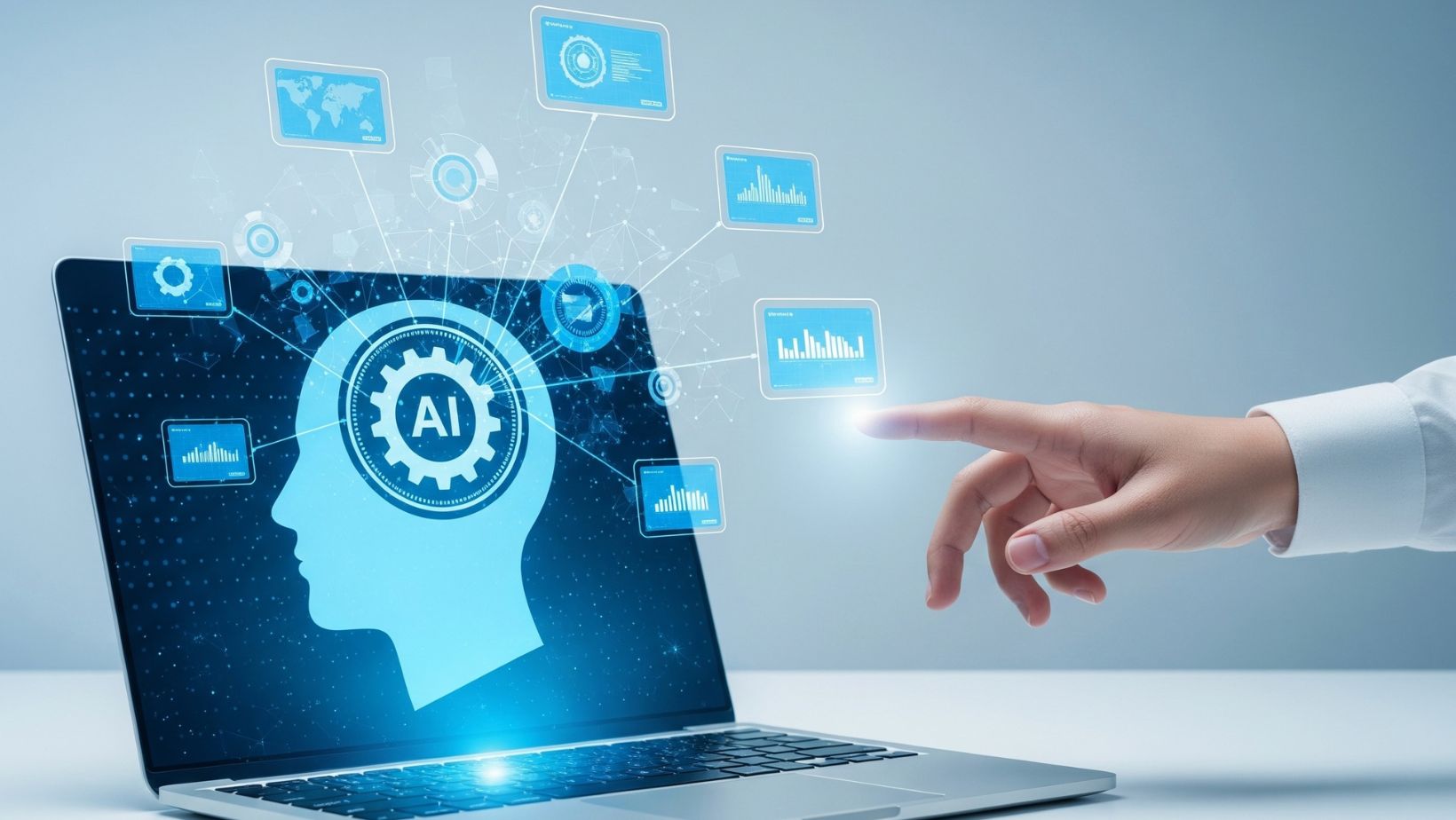Embedded systems are no longer confined to circuit boards and firmware—they’ve become a driver of growth, services, and revenue. Embedded development companies now play a central role in this shift, as edge computing and AI devices redefine the playing field, turning background enablers into headline business assets.
The Shift in Embedded Development: From Cost Center to Profit Driver
What was once viewed as a hidden engineering expense is now evolving into a powerful profit engine. Executives see embedded as a lever for recurring revenue, customer retention, and strategic differentiation.
Traditional Role Of Embedded Systems In Business Operations
For decades, embedded systems kept machines running quietly in the background, from industrial robots to home appliances. They minimized labor costs, automated repetitive work, and ensured operational stability. Areas like embedded device driver development were treated as purely technical necessities, invisible to decision-makers and rarely tied to strategy. Businesses rarely saw these systems as a direct contributor to the bottom line—instead, they were considered necessary infrastructure, not a tool for revenue creation.
The New Paradigm: Embedded Devices As Data And Service Platforms
Today, every device is a data node, constantly collecting insights that can be monetized. Manufacturers are learning that the value lies not in selling a product once but in delivering ongoing services. Embedded platforms become gateways for upgrades, subscriptions, and analytics. This transforms the device into a long-term relationship channel rather than a one-off transaction.
Embedded Systems As Enablers Of Long-Term Customer Relationships
Devices no longer disappear after purchase—they remain active points of contact. Companies can deliver software updates, new features, and support directly to customers through embedded interfaces. This constant interaction strengthens brand loyalty and reduces churn. For businesses, retention is often more profitable than acquisition, and embedded technology is making it possible.
Shifting Budgets: From CapEx-Heavy Hardware To OpEx-Driven Services
Enterprises are redirecting funds from one-time hardware investments toward service-based operating models. The economics change: predictable monthly income replaces unpredictable sales spikes. Investors reward businesses that secure recurring revenue streams. This financial shift makes embedded projects more attractive at the boardroom level.
The Boardroom View: Why CEOs And CFOs Now Care About Embedded
Once an engineering footnote, embedded development is now a strategic topic in executive meetings. CEOs see it as a growth enabler, while CFOs calculate ROI on data-driven services. The conversation has moved from “How much does it cost?” to “How much can it earn?”. That’s a fundamental mindset shift redefining corporate priorities.
Edge Computing as a Catalyst for Business Innovation
By bringing intelligence closer to where data is generated, edge computing changes the business calculus. It enables speed, lowers dependency on cloud, and introduces revenue models built on immediacy.
Real-Time Decision-Making At The Edge
Factories no longer need to wait for cloud servers to detect anomalies. Embedded edge systems analyze machine data instantly, preventing breakdowns before they occur. This saves millions in downtime costs while boosting trust in reliability. Customers notice the difference, and that difference becomes a sales argument.
Reducing Cloud Dependency And Costs
Cloud services are powerful but expensive at scale. Edge-enabled devices trim bandwidth needs by filtering data locally. For CFOs, this translates into lighter cloud invoices and reduced OPEX. Companies can then reinvest those savings into customer-facing innovation.
Creating New Customer-Facing Services
Retailers are embedding edge-powered kiosks that tailor offers in real time. Logistics firms use smart scanners that optimize routes locally without round-trips to the cloud. These services generate incremental revenues, either through upselling or efficiency-driven differentiation. The edge doesn’t just save money—it creates new streams of it.
Localized Compliance: Meeting Regional Data Regulations Through Edge
With GDPR and other regional laws tightening, businesses face mounting compliance costs. Edge processing allows sensitive data to remain local, reducing legal exposure. Companies can market compliance as a feature, strengthening trust with clients. This shifts regulation from burden to competitive advantage.
Competitive Differentiation Through Latency-Sensitive Applications
In markets where speed defines success, milliseconds matter. Gaming platforms, autonomous vehicles, and smart healthcare devices thrive only with ultra-low latency. Edge computing enables these offerings, creating clear competitive separation. Customers are willing to pay more for that assurance.
AI-Powered Devices: Unlocking New Revenue Streams
AI transforms devices from passive tools into active decision-makers. This evolution enables companies to charge for intelligence, not just hardware.
Embedded AI In Predictive Maintenance And Industrial IoT
A single prevented machine failure can justify an entire AI investment. Embedded algorithms detect wear patterns and recommend service before breakdowns. Manufacturers monetize these insights by offering predictive maintenance subscriptions. The result: less downtime for clients, and recurring revenue for vendors.
Smart Consumer Devices As Recurring-Revenue Channels
From smart fridges to wearables, AI opens doors for monthly subscription models. Consumers pay not just for the device but for premium features—nutrition advice, fitness coaching, or automated supply replenishment. These ongoing services extend customer lifetime value dramatically. What was once a one-off sale becomes a steady stream of income.
Data Monetization Opportunities From Connected Products
Every device produces mountains of behavioral data. Companies can anonymize and sell it, or use it internally for product improvements. Retailers and insurers pay heavily for granular usage patterns. The embedded device thus becomes a sensor feeding new business models.
AI-Driven Personalization: Tailoring Products To User Behavior
AI in embedded systems allows for real-time personalization of experiences. Cars adjust driving profiles, appliances adapt to household habits, and wearables fine-tune health metrics. Customers feel seen and understood, raising willingness to pay for premium models. Personalization is no longer a software-only advantage; it’s embedded at the core.
Embedded AI As A Gateway To New Markets (Healthcare, Mobility, Fintech)
AI-powered devices unlock industries that were previously hardware-driven. In healthcare, smart diagnostics create service-based revenue streams. In mobility, autonomous systems generate new transportation business models. Fintech firms leverage AI sensors for fraud detection and secure transactions, merging hardware with trust.
Business Models Emerging Around Edge and AI-Driven Embedded Systems
As embedded intelligence grows, businesses are experimenting with creative monetization.

These models extend far beyond the traditional one-off sale.
Product-As-A-Service (PaaS) And Subscription Models
Companies like industrial toolmakers are shifting to PaaS, renting equipment bundled with continuous support. Clients prefer predictable costs and guaranteed uptime. Vendors secure long-term cash flow and strengthen client dependence. Everyone wins—except competitors stuck in transactional models.
Ecosystem Lock-In And Platform Strategies
Apple’s AirPods or Tesla’s cars are not just products—they’re entry points to larger ecosystems. Embedded technology locks users into interconnected services. The more devices are integrated, the harder it becomes to switch vendors. This lock-in is extremely lucrative.
Partnerships And Co-Innovation With Software Providers
Embedded device makers rarely succeed alone. They team up with AI startups, cloud providers, and integrators to co-create solutions. Such partnerships shorten time-to-market and diversify revenue channels. The ecosystem strategy multiplies value creation.
Hardware-Enabled Marketplaces And App Stores For Devices
Some embedded devices now host their own mini-app stores. Think automotive dashboards offering third-party integrations. Vendors take a revenue cut on every transaction. This transforms the device into a permanent marketplace.
Licensing And White-Labeling AI-Enabled Embedded Platforms
Not every company needs to reinvent the wheel. Some monetize by licensing their embedded AI solutions to other manufacturers. White-label strategies expand reach while generating royalty-based income. The margins can be staggering for advanced embedded development solutions in high-demand verticals like healthcare and mobility.
Challenges and Risks Companies Must Address
The potential is enormous, but pitfalls are equally real. Companies must weigh costs, risks, and capabilities carefully before scaling.
High R&D Costs And Long Time-To-Market
Developing AI-driven embedded systems is capital-intensive. Companies face long lead times before profitability. Startups often collapse under the financial weight, while incumbents risk strategic paralysis. Only those with disciplined roadmaps survive.
Security And Compliance Concerns In AI At The Edge
Edge devices are vulnerable by design—they sit outside corporate firewalls. Hackers target them for entry into larger systems. Regulations like GDPR raise the stakes further. Security-first design becomes non-negotiable.
Talent shortage in embedded and AI engineering
The talent pool is shrinking while demand skyrockets. Companies compete fiercely for embedded and AI specialists. Salaries rise, projects stall, and outsourcing becomes essential. Without the right people, even the best strategy fails.
Vendor Lock-In Risks When Relying On Specific Ecosystems
Tying your business to a single cloud or AI platform can be dangerous. Switching costs escalate over time, trapping companies in unfavorable contracts. Savvy leaders diversify their ecosystem bets. This strategic flexibility preserves negotiating power.
Balancing Innovation Speed With Product Reliability And Trust
Markets reward first movers but punish failures. Companies that rush risk releasing unstable devices, damaging trust. Those who delay risk irrelevance. Striking the balance between speed and reliability is the hardest challenge of all.
Future Outlook: Where Embedded Development is Heading
Tomorrow’s embedded systems will be smarter, more autonomous, and central to revenue models. The question is not whether they’ll evolve, but how fast—and which companies will capture the value.
Integration With Digital Twins And Simulation
Real-time data from embedded systems will flow into digital twins. Businesses will simulate entire factories, logistics chains, or cities. These simulations guide investment, optimize operations, and minimize risk. The embedded device becomes both the sensor and the strategist.
Role Of 5G/6G And Ultra-Low-Latency Networks
Connectivity defines possibilities. With 5G and soon 6G, devices will exchange data at lightning speed. This unlocks new industries—autonomous transport, telemedicine, immersive entertainment. Embedded development rides on these networks as the critical enabler.
Towards Autonomous, Self-Optimizing Devices
Devices will evolve into systems that learn and adapt on their own. They will predict needs, adjust parameters, and self-heal without human intervention. For businesses, that means lower support costs and higher margins. For customers, it means unprecedented reliability.
Convergence Of Embedded, Cloud, And Quantum Computing
Boundaries between computing layers are fading. Embedded chips will handle certain tasks locally, cloud will orchestrate, and quantum will solve the unsolvable. Businesses that integrate all three will command unmatched advantage. The future is hybrid, not siloed.
Business Ecosystems Built On “Smart Everything”
The final destination is an economy where every object is intelligent. From homes to factories to entire cities, embedded systems form the nervous system of commerce. Companies that monetize “smart everything” will dominate markets. Those that resist will fade into irrelevance.
Conclusion
Embedded development has moved from the shadows into the spotlight. With edge computing and AI-powered devices, it’s no longer just about engineering—it’s about revenue, strategy, and market leadership.


